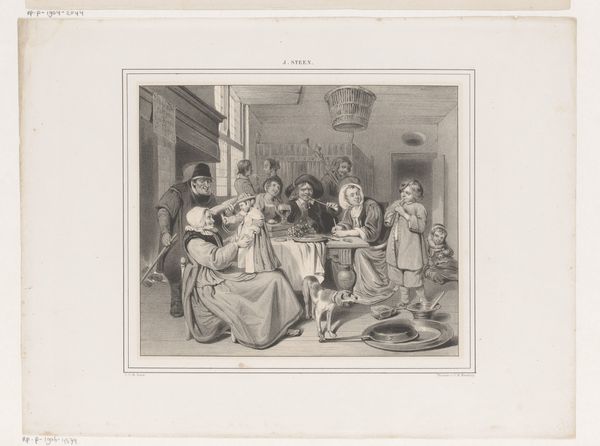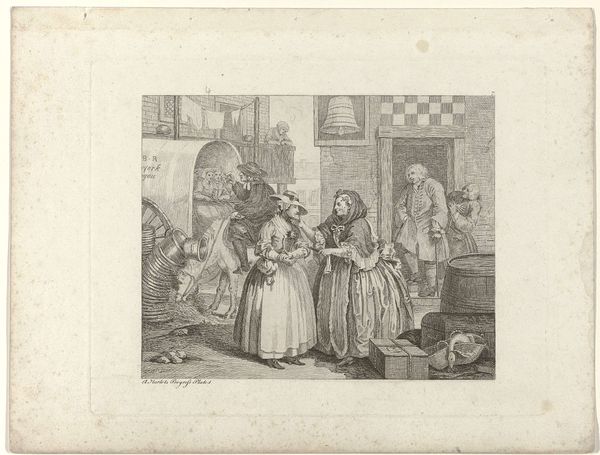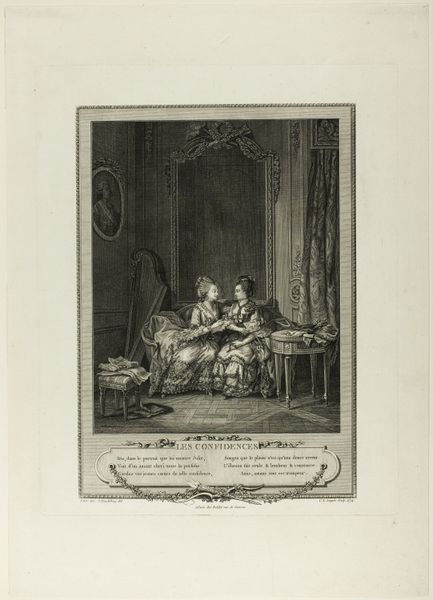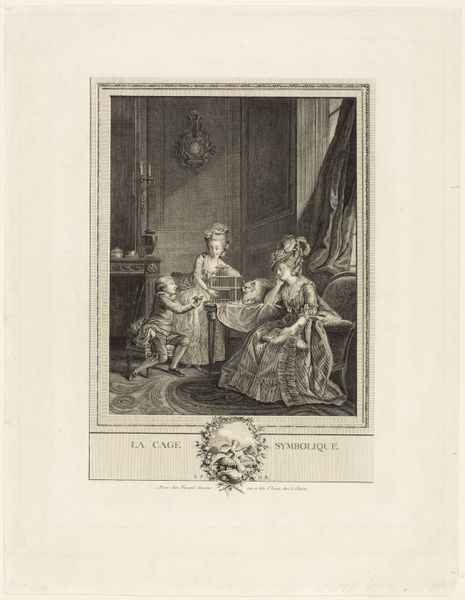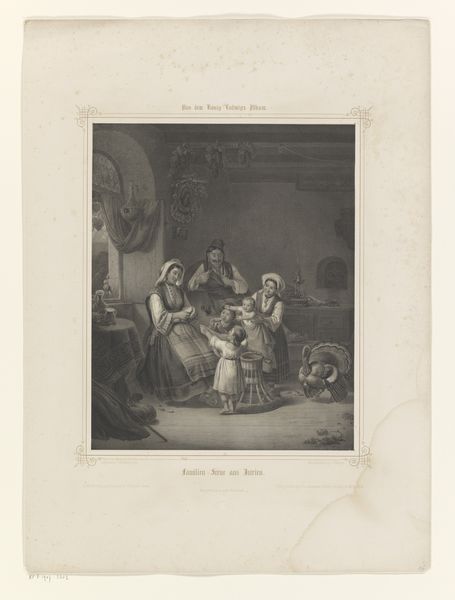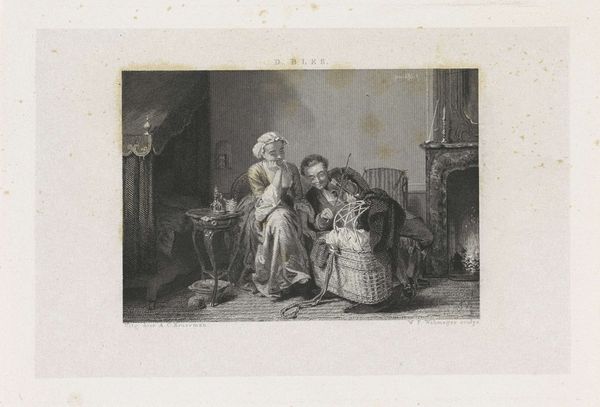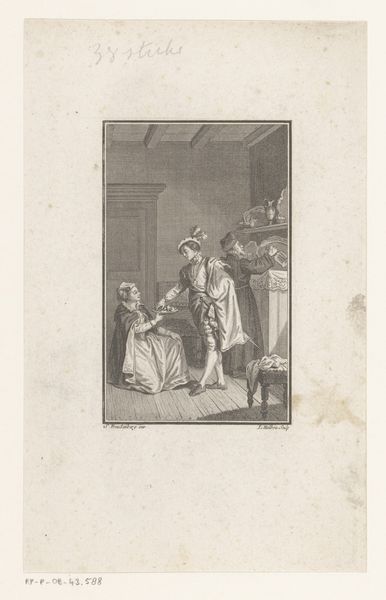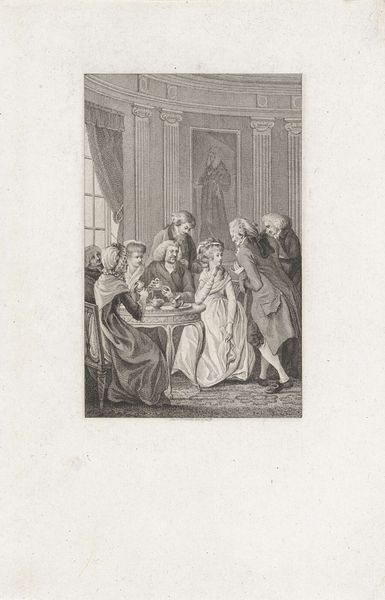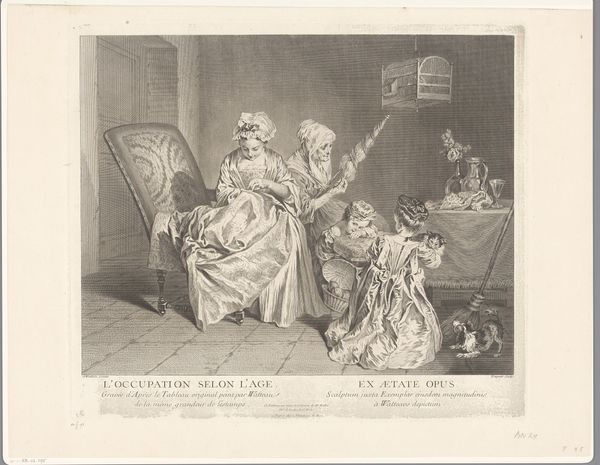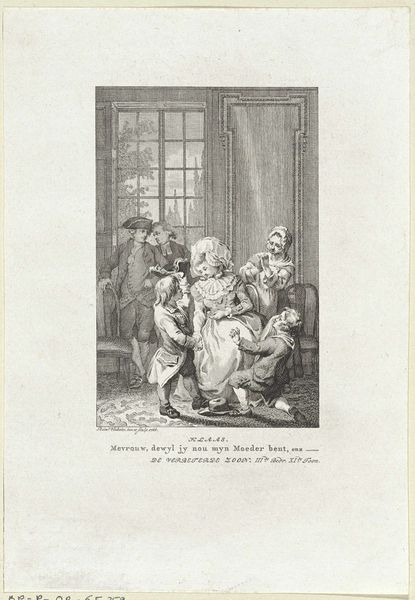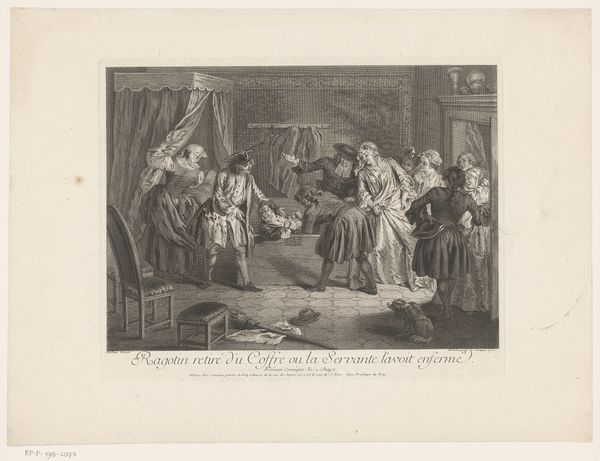
print, engraving
#
narrative-art
# print
#
figuration
#
romanticism
#
line
#
genre-painting
#
history-painting
#
engraving
Dimensions: 194 mm (height) x 187 mm (width) (plademaal)
Editor: We're looking at "Barselstuen, III akt, 6. scene," an engraving made between 1810 and 1816 by Wilhelm Heuer. The detail is incredible, but the scene feels chaotic, almost theatrical. What do you see in this print? Curator: Immediately, my eye is drawn to the dynamic interplay of lines. Observe how Heuer uses hatching and cross-hatching to build volume and create tonal variation, particularly in the figures’ garments and faces. Note how the stark contrast emphasizes the dramatic intensity of the scene. Editor: So you're focusing on the... structure? The marks on the paper? Curator: Precisely. How do the lines define the figures? How do they contribute to the overall sense of movement and tension within the composition? Semiotically, each stroke communicates intention and contributes to the legibility of the image. Editor: I hadn't considered each individual line so deliberately. Does the linear style place it within a particular movement or style? Curator: The clarity of line certainly connects to neo-classical traditions but the emotional tenor suggests the emerging Romanticism of its time. Are you drawn to certain figures or areas? Do you see particular focal points that Heuer has structured? Editor: The man in the center is pretty clearly the focal point. Now I’m curious how Heuer manipulated those visual elements to create that focal point. Thanks for walking me through this! Curator: The arrangement of the elements is all that matters; how the image makes its case independent of what that case happens to be. A pleasure, I've learned a little myself.
Comments
No comments
Be the first to comment and join the conversation on the ultimate creative platform.

